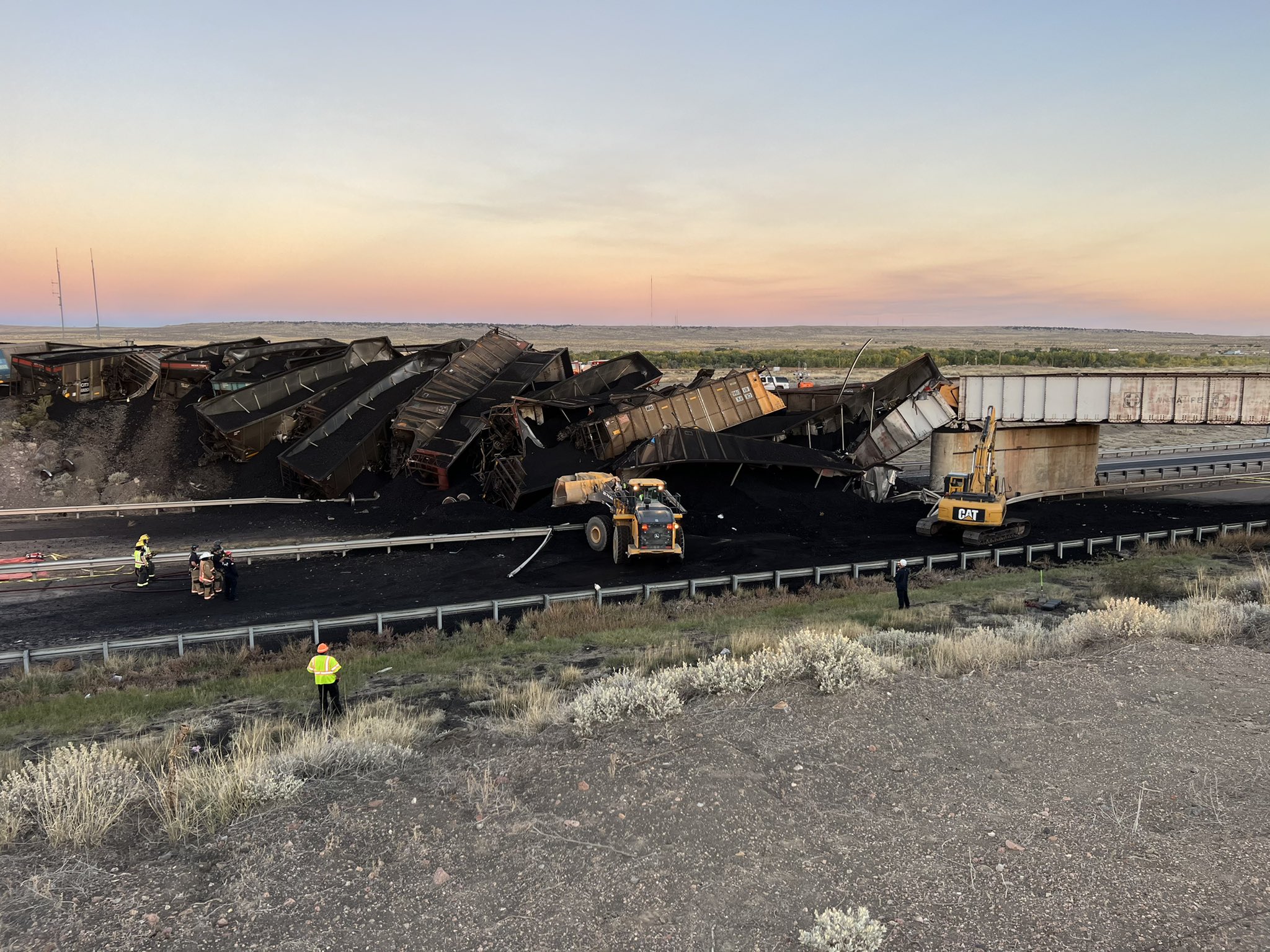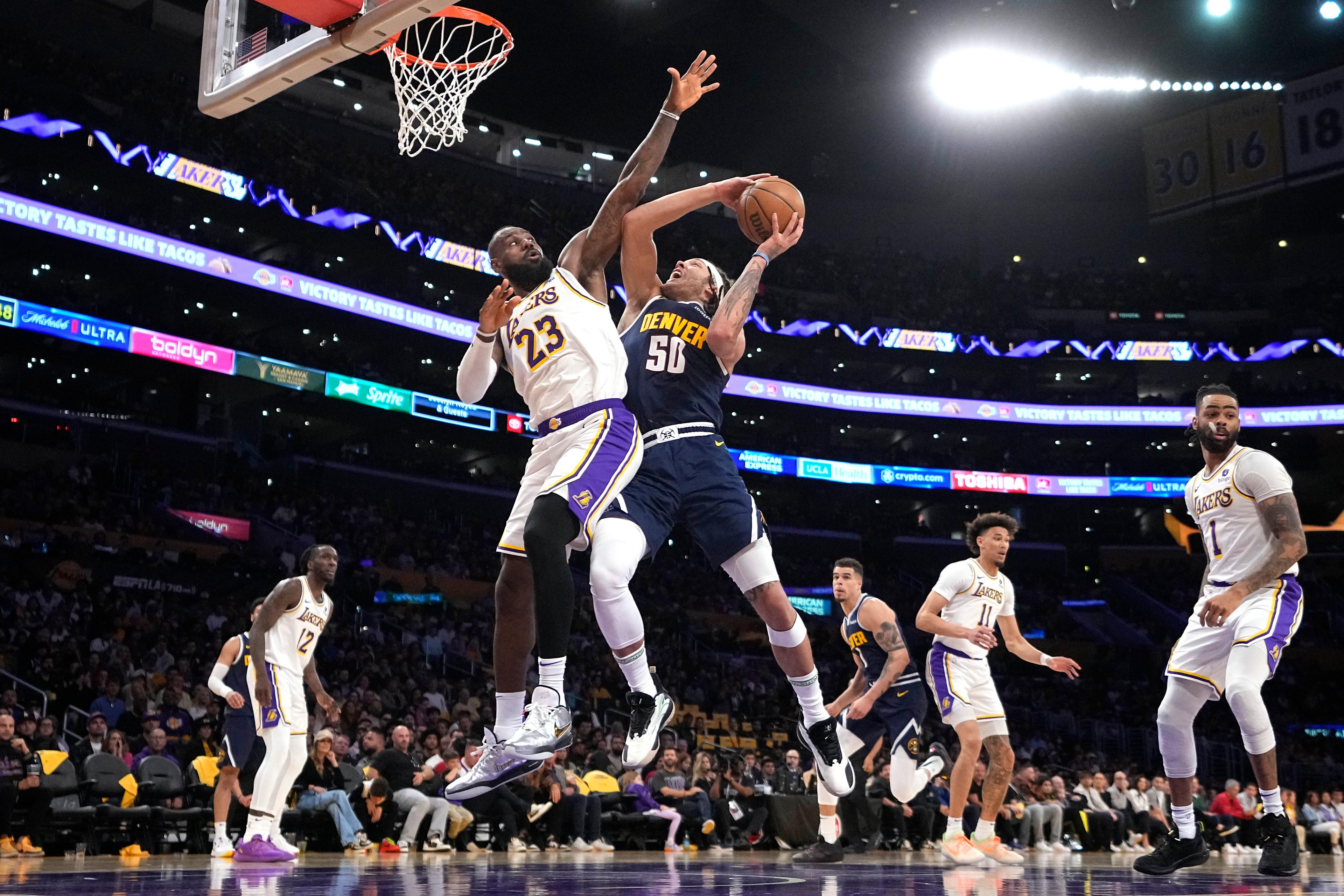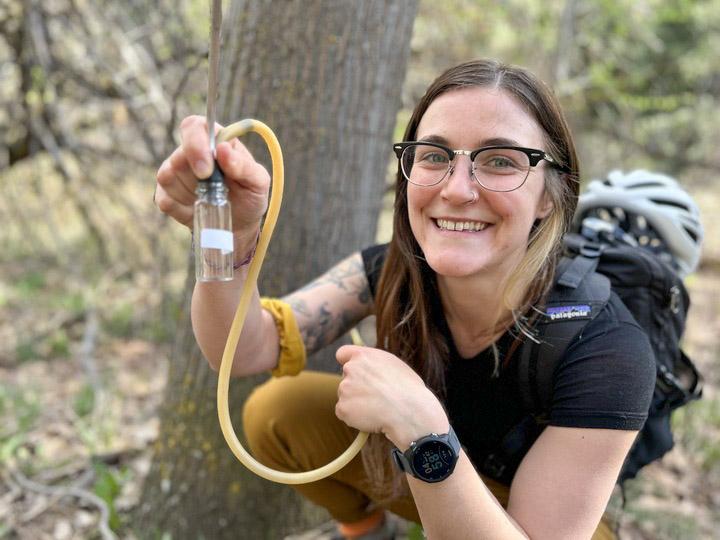
By Matthew Brown/AP
An investigation into a Colorado coal train derailment and bridge collapse that killed a truck driver is focused on whether inspection and maintenance practices at BNSF Railway contributed to the accident, federal officials said Thursday.
The steel bridge built in 1958 collapsed onto Interstate 25 Oct 15. 30 cars from a BNSF Railway train hauling coal derailed. The National Transportation Safety Board has said that a broken rail preceded the bridge collapse.
The accident just north of the city of Pueblo closed the main north-south highway through Colorado for four days while crews cleared hundreds of tons of coal and mangled railcars.
Killed in the accident was Lafollette Henderson, 60, of Compton, California, who had been driving under the bridge.
The BNSF train was traveling about 32 mph (52 kph) — below the 45 mph (72 kph) limit for the area, the NTSB said.
Broken rails and other track problems are a leading cause of derailments, according to federal accident data. In July, federal investigators blamed poor track conditions along a BNSF route in Montana for the 2021 derailment of an Amtrak train that killed three people and injured 49 others.
BNSF, based in Fort Worth, Texas, conducted track infrastructure testing and visual inspections of the rail line in the area of the Colorado bridge collapse within the last three months, said spokesperson Kendall Kirkham Sloan. That included an inspection on the day of the accident, Sloan said.
“Our teams regularly conduct extensive track, bridge, rail and weather event inspections across our network," said Sloan, who declined to answer if the track had undergone any previous repairs.
The ownership of the collapsed bridge remains in dispute between BNSF and the state of Colorado. A 1957 agreement appears to assign ownership of the bridge to the railroad, while another document from 1968 said the state had maintenance responsibilities, said Matt Inzeo with the Colorado Department of Transportation.
Inzeo said the railway has agreed to replace the structure and cover the costs.
Pressure for the railroad industry to improve safety has intensified since the February derailment of a Norfolk Southern train hauling toxic chemicals that triggered evacuations in Ohio and Pennsylvania. There were more than 12,400 train derailments in the U.S. in the past decade. The rate has been falling in recent years, but there were more than 1,000 derailments last year, or roughly three a day across the U.S., according to accident reports submitted by railroads.
During track inspections — typically conducted by private companies, not government officials — crews look for cracks or other defects in the rails that could make them more susceptible to breaking. Repairs are scheduled based on the severity of the defect. That means even when problems are identified they might not be fixed immediately.
The Colorado accident follows a railroad bridge collapse in June along a Montana Rail Link route that sent railcars with oil products plunging into the Yellowstone River, spilling molten sulfur and up to 250 tons (226.7 metric tons) of hot asphalt. The accident remains under investigation and much of the spilled asphalt remains in the river.






